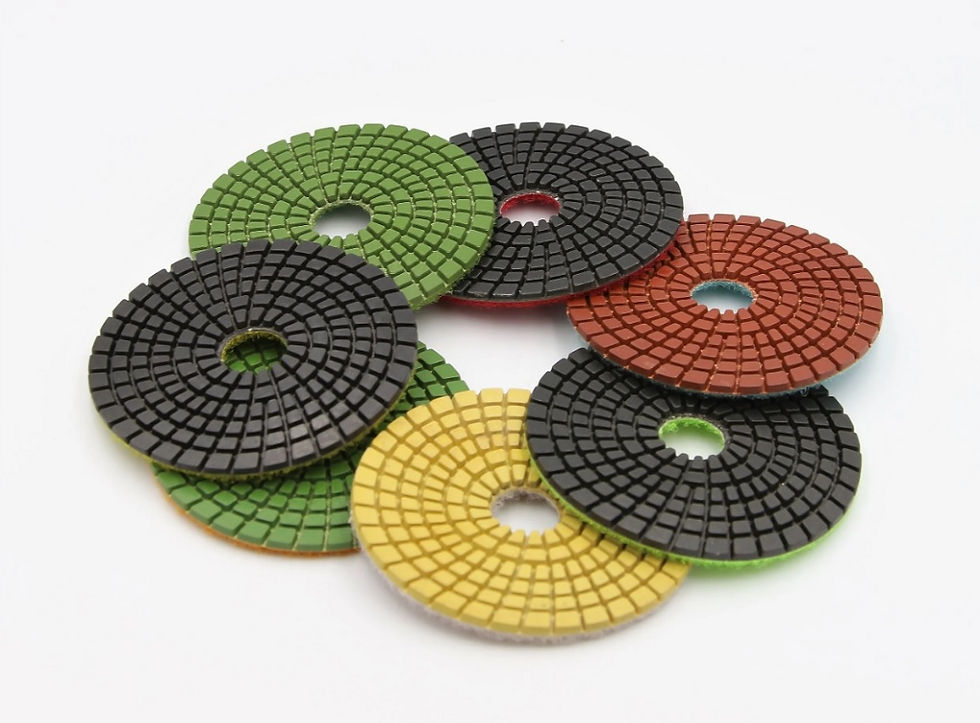Overview of Polishing Pads Types, Benefits and Related Factors
- ameliya lanne
- Jan 8, 2022
- 3 min read
Updated: 2 days ago

So, what are polishing pads? Apolishing padis a cloth or synthetic disc bonded to the flat surface of a polishing plate. Also, itis a mechanically processed instrument that may be used to impart polish to a surface. More about thepolishing pads, theyare mostly used to generate the finest quality scratch-free reflective surface finishes.
As thepad materials always have some compliance, polishing using polishing pads is termed a "soft polishing" approach. The pad's thickness and hardness determine the compliance. The thicker, softer pads allow components to sink deeper into the pad, resulting in a radius around the contact edge circumference. The radius, sometimes known as "edge dubbing," prevents the component from being polished flat all the way around.
Types of Polishing Pads
Although all polishing pads are intended to process the polishing agent in a very regulated and steady manner, the materials are used in various shapes and sizes. There are benefits and drawbacks to each substance. Cleaning pads made of foam the foam pad, which is perhaps the most popular comes in a variety of sizes, shapes, colors, and sizes.
1. Foam Made Polishing Pads: The foam pad is perhaps among the most popular polishing pads, and it comes in a variety of sizes, forms, colors, and shapes. The size of the cell, the kind of cell, and the thickness of the cell walls are the key distinctions with the material itself. These alter the stiffness of the pad and its capacity to absorb material or move it around with additional friction during polishing. Overall, the foam polishing pads are by far the most popular polishing pad due to their inexpensive manufacture and numerous design options.
2. MicrofiberMade Polishing Pads: Long or short strain fibers are used on a strong back-plate in the microfiber polishing pad (like thick cloth or stiff foam). The microfiber material has a lower capacity for absorbing material and/or residue, but it can polish with more friction and pressure.
3. WoolPolishing Pads: These types of polishing pads are created from synthetic or natural wool fibers that have been treated into a uniform shape and size. They're usually linked to a sturdy back plate and manufactured from long or short fibers. The polishing pad's effectiveness is determined bythe type of fiber used. Wool pads are often rougher than foam pads and provide a better cutting impact. Despite their widespread use, Wool pads require extra attention to maintain their quality.
4. PE Fiber Made Polishing pads: Certain pads are manufactured from synthetic strands of fibers that provide a solid surface; however, these pads are not suggested for use on paintwork. These pads are frequently used in conjunction with polishing chemicals specifically intended for these hard materials.
5. Wetsand Pads: Wet sanding pads are designed with denim and coarse micro-abrasives, and are meant to have a high cutting power. When it comes to using wet sanding pads, they should be used with caution and are frequently mixed with large amounts of water and lubricants. Moreover, these padsshould only be used when there is much paint on the surface.
Benefits of Using Polishing Pads
The polishing pads aid in the controlled application of polishing agent to the surface.
The pads are a substance designed to leverage certain qualities when polishing.
The stiffness of the padmaterialsmakes the moving of pads smoother across surfaces.
Final Words
As you are now familiar with the types of polishing pads, it will be difficult for you to choose the right one for your needs and requirements.



















Comments